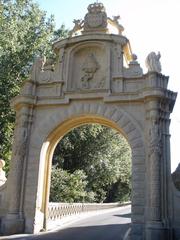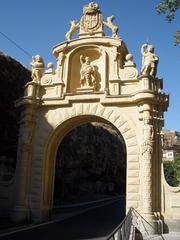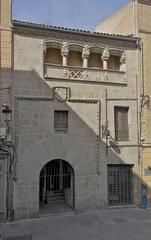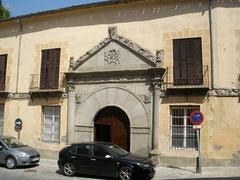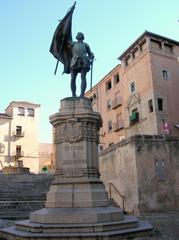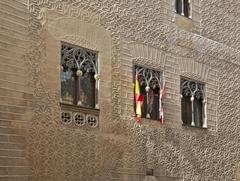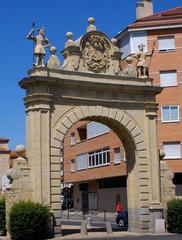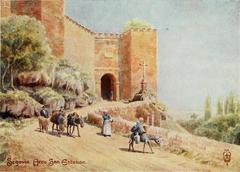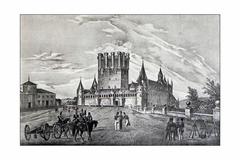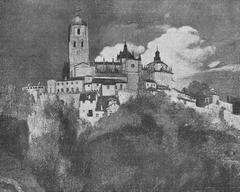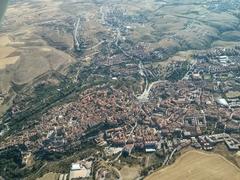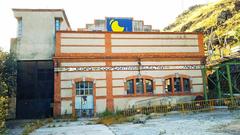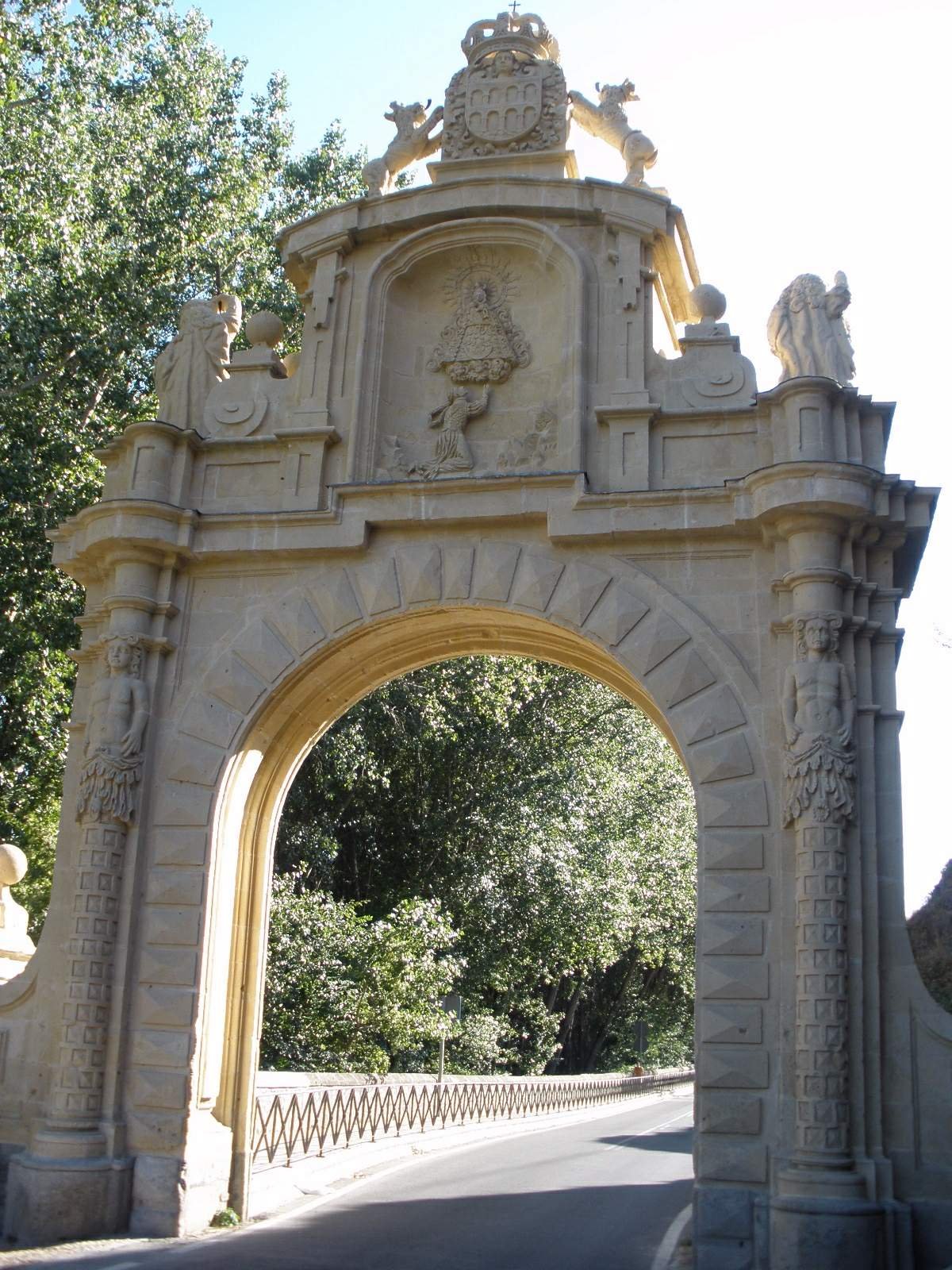
Arco de la Fuencisla Segovia: Visiting Hours, Tickets, and Historical Site Guide
Date: 14/06/2025
Introduction
Nestled at Segovia’s southern edge, the Arco de la Fuencisla stands as a majestic Baroque gateway, blending centuries of civic pride, religious tradition, and artistic grandeur. Built in the early 18th century as part of Segovia’s urban renewal, the arch not only welcomed travelers along the Camino Real de Medina del Campo but also became a monument to the city’s spiritual heritage, particularly the legendary “Miracle of María del Salto” (El Norte de Castilla). This guide offers comprehensive information about the arch’s history, architecture, accessibility, nearby attractions, practical visitor tips, and how to make the most of your visit to this emblematic monument.
Table of Contents
- Historical Background
- Architectural Features
- Visiting the Arco de la Fuencisla
- Nearby Attractions and Travel Tips
- Events and Cultural Significance
- Restoration and Preservation
- Practical Information
- Frequently Asked Questions (FAQ)
- Conclusion and Further Resources
Historical Background
Urban Development and Need for a Gateway
The Arco de la Fuencisla was envisioned during Segovia’s early 18th-century urban expansion to provide a formal entrance along the Camino Real de Medina del Campo, a vital route connecting Segovia with other Castilian cities (El Norte de Castilla). Previously, the area was a natural passage but lacked a defining marker. The new arch symbolized Segovia’s renewed urban image and its control over access, reflecting the Baroque era’s penchant for monumental city portals.
Construction Timeline and Architectural Challenges
Begun in 1706 under architect Mateo de Escobedo, the project faced delays and disputes, resulting in Escobedo’s imprisonment and the arch’s completion by Juan de Ferreras in 1721. These turbulent beginnings led to certain structural weaknesses, but the arch has stood the test of time and remains a prominent landmark (El Norte de Castilla).
Baroque Style and Symbolism
The arch exemplifies Baroque civic architecture, with its robust pilasters, grand archway, and sculptural program. On one side, the arch narrates the “Miracle of María del Salto”—the city’s foundational legend in which a Jewish woman’s life is saved by the Virgin Mary, leading to her conversion and the Virgin’s veneration as Segovia’s patroness (Segovia Turismo). On the other, it features St. Ferdinand, symbolizing Christian unity and the Reconquista. The arch’s coat of arms and mythological figures, including Hercules, further underscore its civic and spiritual importance (Arteviajero).
Architectural Features
Structural Overview
The Arco de la Fuencisla is constructed primarily from local limestone, standing roughly 12 meters tall and 8 meters wide. Its semicircular arch is framed by sturdy pilasters and surmounted by a classical entablature and triangular pediment. The city-facing side is more elaborately decorated, with rusticated stonework at the base and smoother upper sections leading the eye upward (Turismo de Segovia).
Decorative Elements
- Reliefs and Statues: The arch features a sculptural depiction of the Miracle of María del Salto and a statue of St. Ferdinand holding a globe. Mythological figures like Hercules and regional coats of arms are also present, blending Christian and classical motifs (Arteviajero).
- Inscribed Entablature: Commemorates the arch’s dedication and blends religious with civic iconography.
Materials and Techniques
Traditional 18th-century masonry was employed, using locally quarried limestone and lime-sand mortar. The arch’s keystone provides both structural stability and symbolic focus. Restoration efforts have preserved its intricate carvings and natural stone patina (Arteguias).
Visiting the Arco de la Fuencisla
Visiting Hours and Tickets
- Arch Access: Open-air and accessible 24/7. No entrance fee or tickets required.
- Sanctuary of the Virgen de la Fuencisla:
- Open daily: 9:00–14:00 and 16:00–19:00.
- Free entry; donations appreciated (El Pandelos Pobres).
Accessibility
- Paths: Paved and gently sloped near the arch, though some steep gradients exist from the city center.
- Wheelchair Access: Generally manageable from the riverside approach.
- Parking: Available near the sanctuary; public buses also serve the area (Spain.info).
Nearby Attractions and Travel Tips
- Sanctuary of the Virgen de la Fuencisla: Adjacent Baroque sanctuary, focal point for annual religious festivals.
- Alcázar of Segovia: Iconic castle atop the cliffs, accessible by foot from the arch (The Tour Guy).
- Casa de la Moneda: Historic royal mint and museum on the Eresma River (The Crazy Tourist).
- Mirador de la Pradera de San Marcos: Offers postcard-worthy views of the arch and the Alcázar.
- Green Belt and Riverside Walks: Shaded trails, picnic areas, and birdwatching opportunities.
Events and Cultural Significance
The arch is central to Segovia’s September festivities honoring the Virgin of Fuencisla. Processions, novenas, floral offerings, and community gatherings animate the area. The arch also features in dramatized tours and local celebrations, reinforcing its status as both a religious and civic symbol (Segovia Turismo).
Restoration and Preservation
By the early 21st century, the arch had suffered from weathering and pollution. In 2009, the Segovia City Council completed a major restoration, stabilizing the structure and restoring lost decorative elements such as the metallic crown of St. Ferdinand and pendent jewelry of the Virgin (El Norte de Castilla). Continued maintenance ensures its longevity for future generations.
Practical Information
Location and Access
- Address: Southern entrance to Segovia, near the Sanctuary of the Virgen de la Fuencisla.
- How to Get There:
- By foot: 15–20 minutes from Plaza Mayor.
- By bus: Lines serving San Marcos district.
- By car: Limited parking near the sanctuary; city center is pedestrianized (Spain.info).
Facilities and Safety
- Restrooms: Available at the sanctuary and Casa de la Moneda.
- Visitor Center: Plaza del Azoguejo, near the Aqueduct, provides maps and tour bookings.
- Footwear: Comfortable walking shoes recommended for cobblestone and hilly terrain.
- Weather: Exposed area; bring sun protection in summer and warm clothing in winter.
Photography Tips
- Golden Hours: Sunrise or sunset for optimal lighting.
- Best Vantage Point: Mirador de la Pradera de San Marcos.
- Alt Tags for Images: “Arco de la Fuencisla, Segovia Baroque Gateway,” “View of the arch and Alcázar,” “Relief of María del Salto.”
Dining and Refreshments
- Cafés and bars near the sanctuary and riverside.
- Restaurants and tapas bars around Plaza Mayor and the Cathedral offer local specialties such as cochinillo (roast suckling pig) (Spain.info).
Frequently Asked Questions (FAQ)
Q: What are the Arco de la Fuencisla visiting hours?
A: Open-air monument, accessible at all times.
Q: Is there an entrance fee or ticket required?
A: No, it’s free to visit.
Q: Is the site wheelchair accessible?
A: Mostly, though steep gradients exist; riverside access is easiest.
Q: Are guided tours available?
A: Yes, including dramatized tours and night walks, bookable at the Visitor Reception Centre.
Q: What historical sites are nearby?
A: Alcázar of Segovia, Sanctuary of the Virgen de la Fuencisla, Casa de la Moneda, and Segovia Cathedral.
Conclusion and Further Resources
The Arco de la Fuencisla is more than just a gateway; it is a living testament to Segovia’s blend of legend, faith, and architectural mastery. Free and open to all, the arch invites you to immerse yourself in the city’s rich history and scenic beauty. Enhance your visit by exploring nearby landmarks, joining guided tours, and, if possible, timing your trip with local festivities in September.
For updated information, digital maps, and audio guides, download the Audiala app. Discover more about Segovia’s treasures in our related articles and connect with us on social media for travel inspiration.
References and Further Reading
- El Norte de Castilla – Arco de la Fuencisla History
- Turismo de Segovia – Official Tourism Site
- Arteviajero – Religious and Cultural Significance
- El Pandelos Pobres – Sanctuary and Festivities
- Spain.info – Practical Visitor Information
- Segovia Turismo – Sanctuary Information
